How do you step on a Southern Copperhead? This is how. Their well camouflaged bodies make them easy to overlook if you are not watching your step. By nature, a copperhead will seek out areas that are best suited to their particular form of camouflage. Areas with a floor of dried leaves, branches, and dappled sunlight are prime locations. Use extra caution when hiking through places like these.
The Great Trinity Forest seems to be teeming with these venomous (but not necessarily deadly) snakes. Over the last couple of weeks I have noted roadkill copperheads along the entrance to the Trinity River Audubon Center. This is the first live specimen I have encountered.
This individual was approximately 2ft/60cm long. A small snake. I came across him while walking off trail under a canopy of trees. He was lying still, directly in my path. Luckily, I saw him with time to spare.
I took a few quick pictures, and then gently prodded him with along stick. The copperhead quickly curled into a defensive position, and I took a few more pictures.
Then, to encourage him on his way so that he would not be in my path on my return journey, I prodded him again. No reaction. I tried again, using the stick to move his head and lift his body, still with no real response from the snake. These guys are very reluctant to strike, and would probably prefer to avoid confrontation when encountering an animal as large as a person.
After a minute or two of this continued agitation the snake did finally strike out at the stick. That’s when I decided I was not going to have success encouraging the snake to leave, so I gave up and left the snake to his own devices. When I returned 45 minutes later the copperhead was long gone.
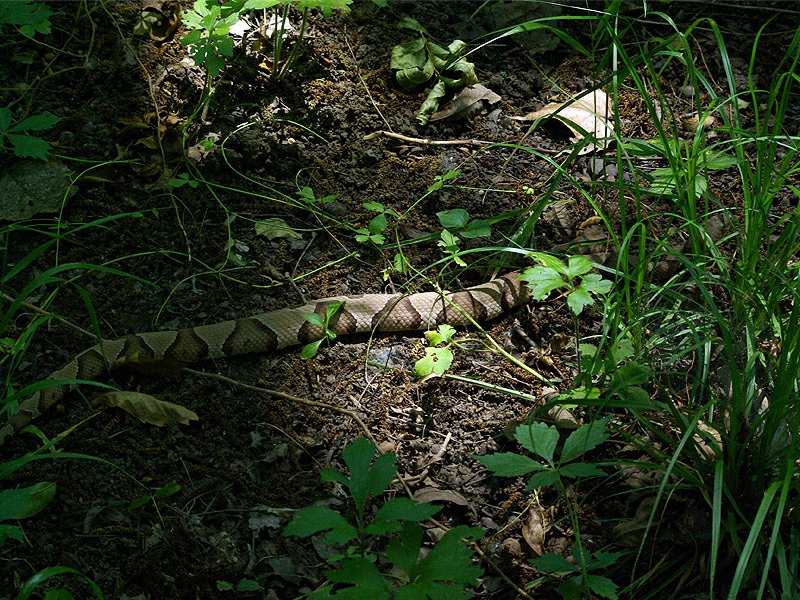
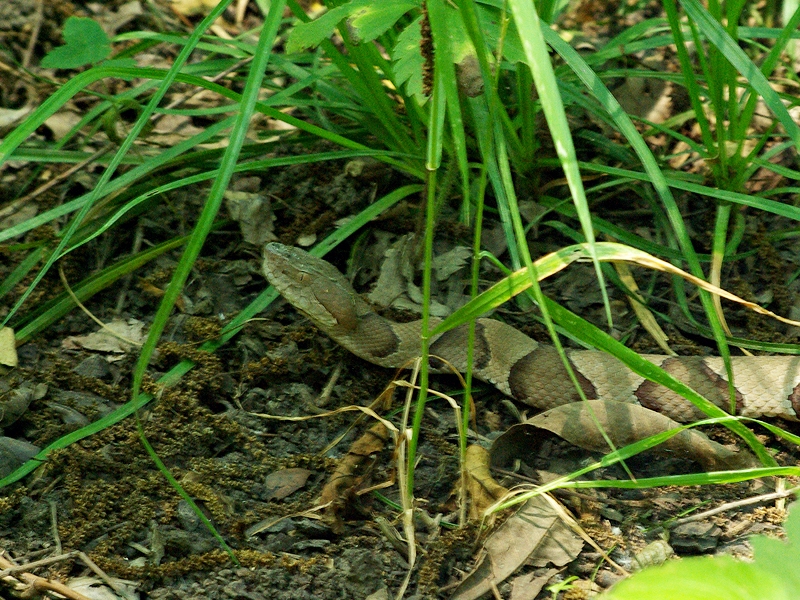
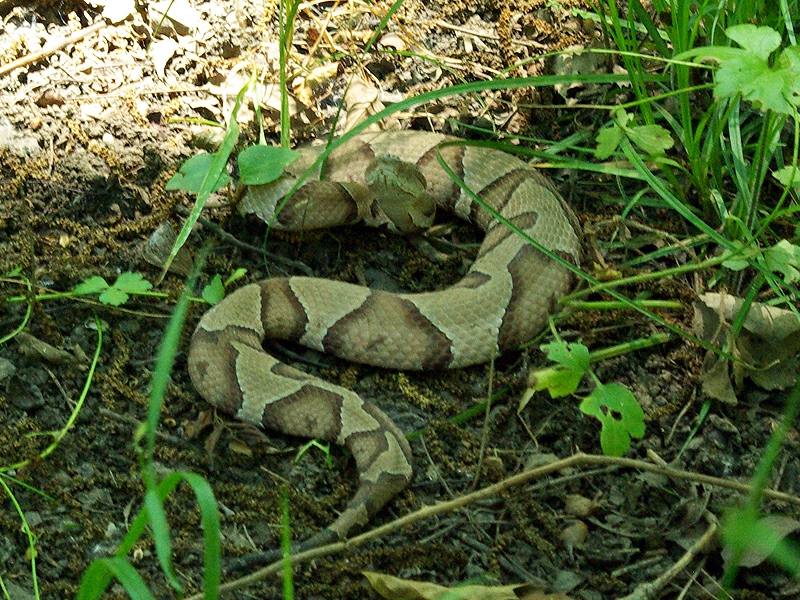
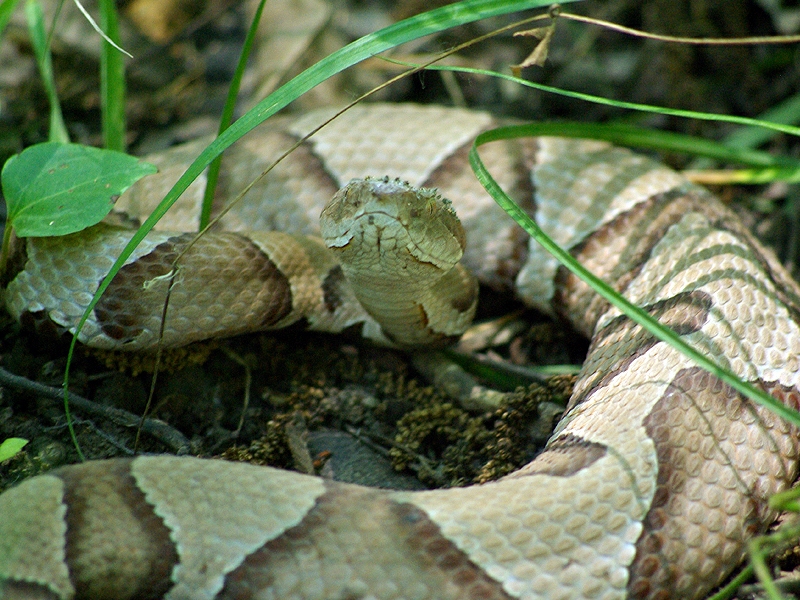
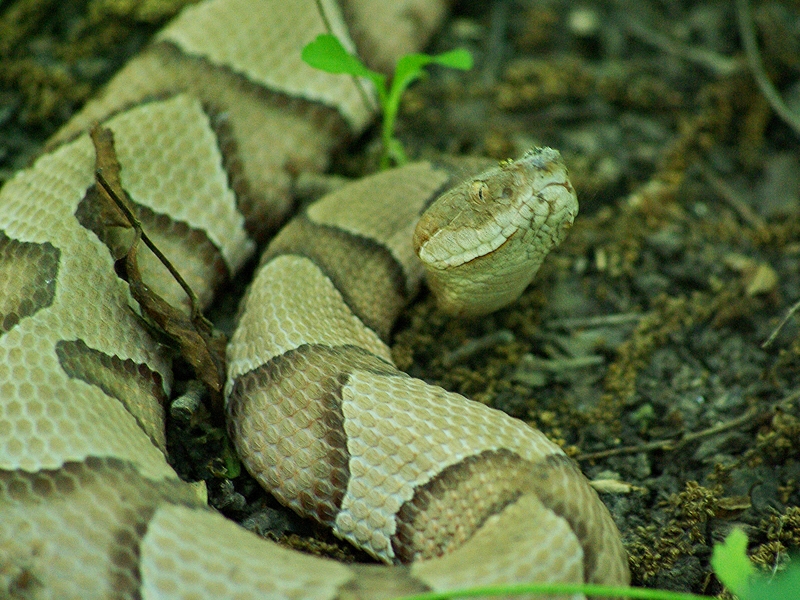




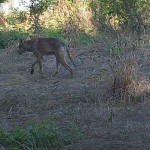
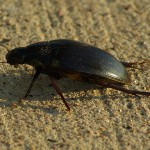
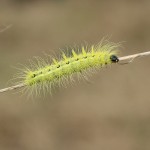
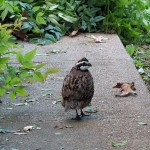
What a chunky little fella this was. The copperheads I’ve seen are usually more slender, although about the same length as this one. It’s amazing that despite their beautiful and striking body pattern they are so difficult to spot. I’ve only seen one here in Dallas Co., it was at the fish hatchery by White Rock Lake. That was also a Southern Copperhead, which surprised me, thought it was a little outside their range, being more common eastward. What do you say? Do you see more Southern Copperheads than Broad-banded Copperheads here?
I also ran into a copperhead at the White Rock hatchery — close to the south entrance.. Very close encounter! Be safe and alert because their numbers are up!